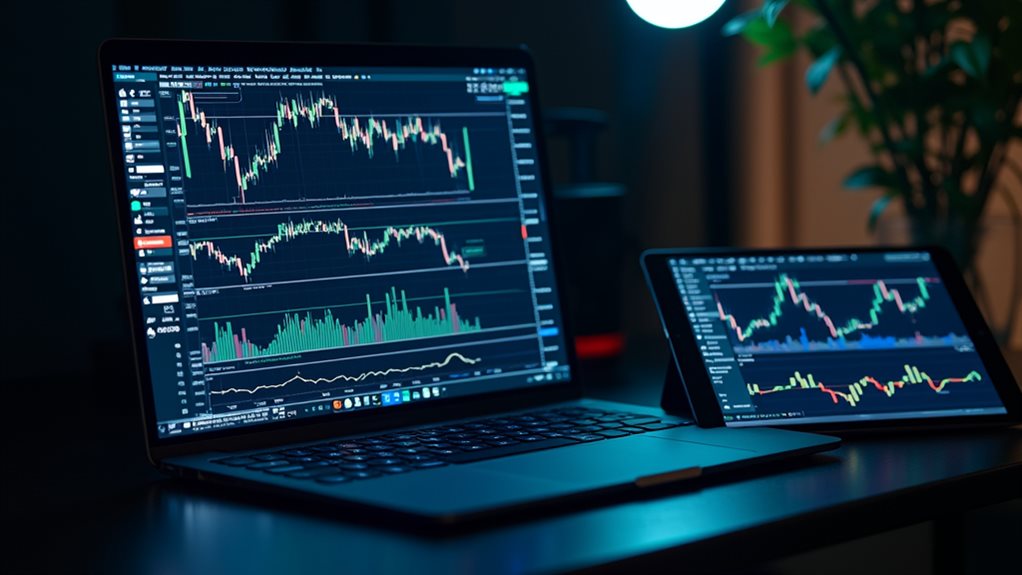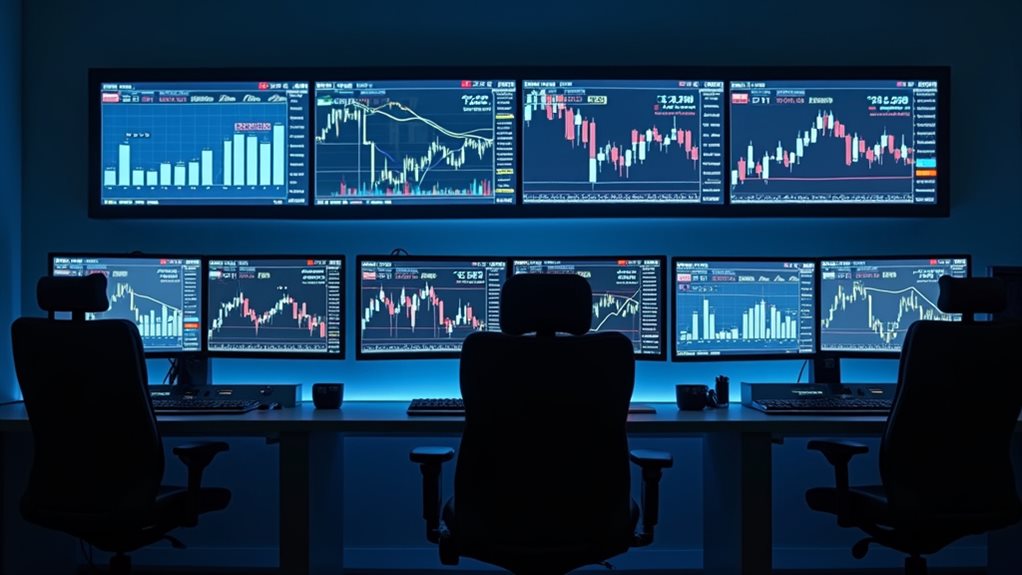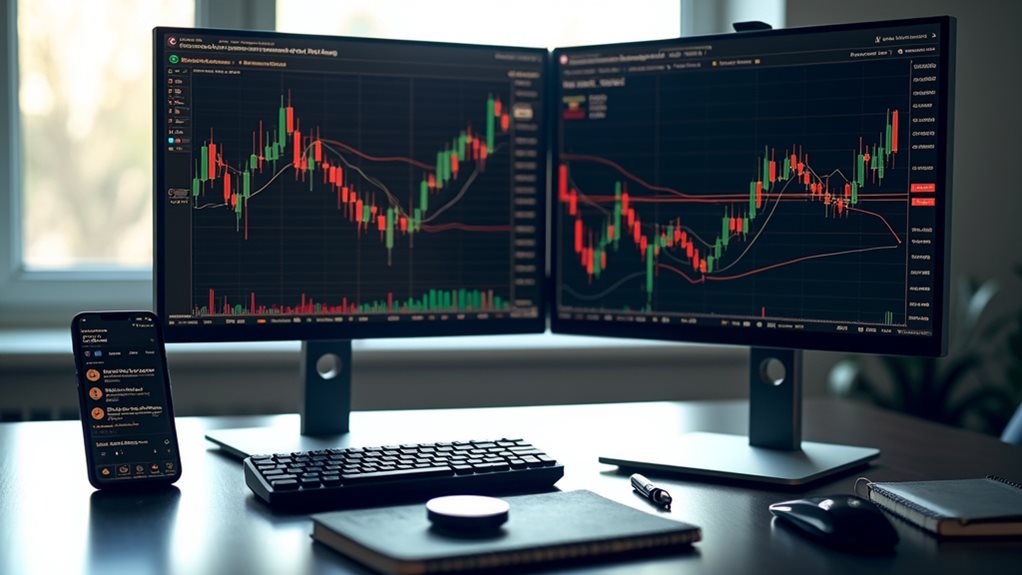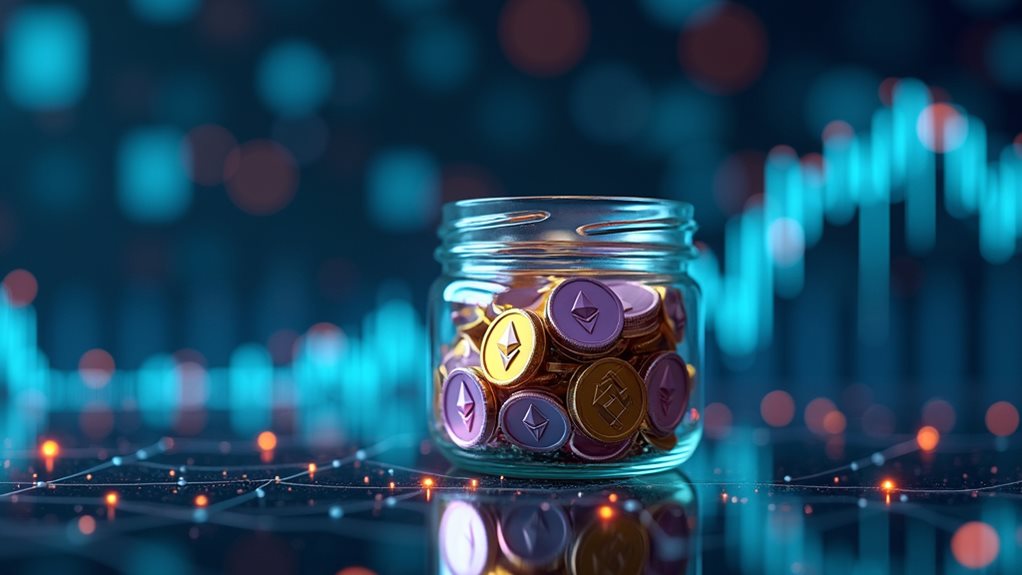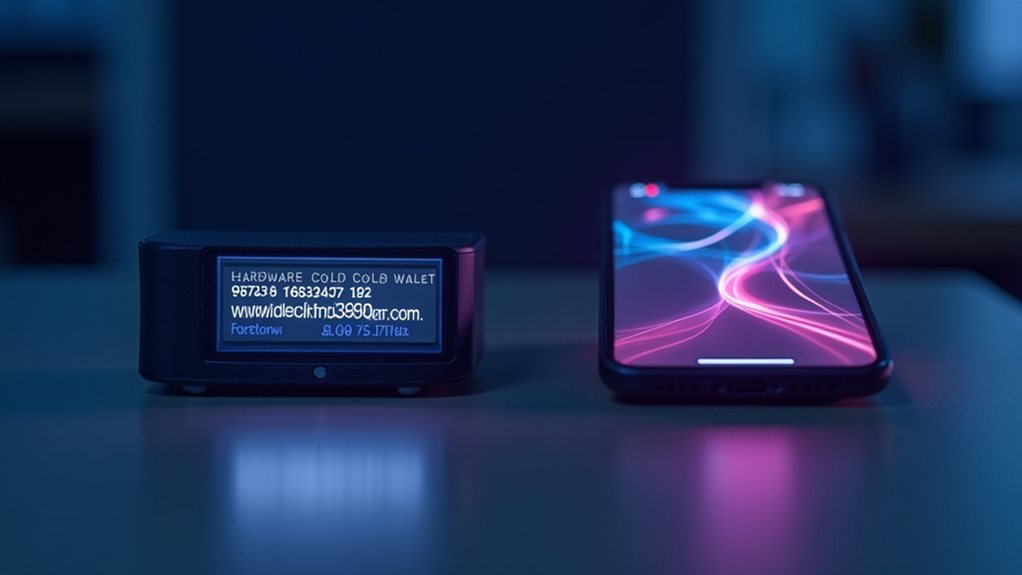Technical analysis helps you spot crypto trends by tracking price patterns that repeat due to market psychology. You’ll need moving averages, RSI, and Bollinger Bands to identify momentum shifts. Don’t trust single indicators—combine complementary tools across multiple timeframes for confirmation. Volume matters—no volume, no conviction. And please, use stop losses. Crypto markets don’t care about your feelings. The difference between trading and gambling? Proper risk management techniques.
The Foundation of Technical Analysis in Cryptocurrency Markets
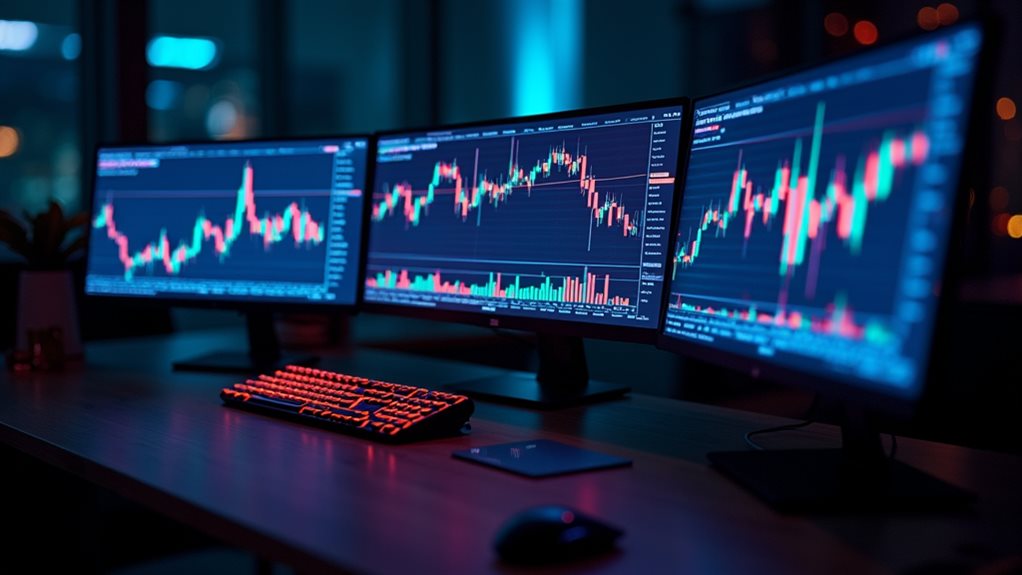
When you strip away all the crypto hype and jargon, technical analysis boils down to one simple idea: the chart tells you everything.
Price movements aren’t random—they’re visual representations of human emotion and behavior. That’s market psychology at work.
The market is always right. Period. Doesn’t matter what you think a coin “should” be worth.
Traders who master trend identification gain a serious edge. They spot patterns that repeat because, let’s face it, human emotions don’t change.
Fear and greed drive markets now just like they did a century ago.
Price action discounts everything. News, fundamentals, Twitter drama—it’s all baked into the chart already. Technical analysis helps identify optimal entry and exit points based on these price movements.
Your job isn’t to argue with the market. It’s to read what it’s telling you.
Implementing proper risk management techniques is essential for long-term success, even when your win rate is only around 55%.
Essential Technical Indicators for Crypto Traders
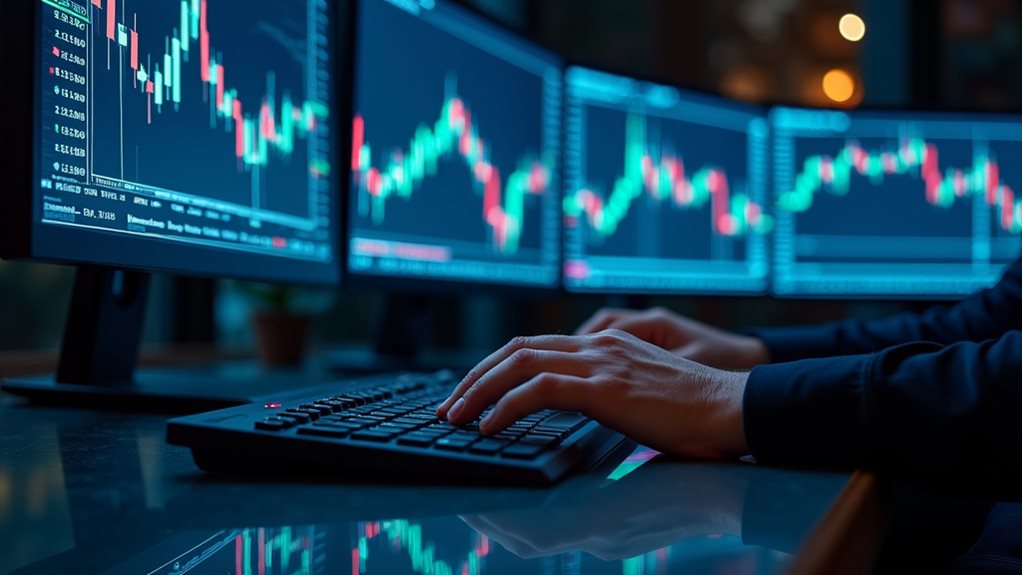
Unlike traditional markets, crypto’s 24/7 volatility demands reliable navigation tools. You need indicators that cut through the noise.
Moving averages refine price chaos, with SMAs spotting long-term trends and EMAs catching short-term momentum. Watch for those golden crosses. They matter. Market sentiment analysis helps predict major price movements across trading pairs.
When chaos meets math, clarity emerges. Golden crosses aren’t just patterns—they’re profit signals waiting to be decoded.
The relative strength index (RSI) tells you when markets are getting too hot (above 70) or too cold (below 30). Crypto loves extremes. Exploit them.
Bollinger Bands show you volatility shifts. OBV tracks money flow. Both signal before prices move.
Momentum indicators? They’re your early warning system. Stochastics, CCI, MACD—each spots different pressure points in the market. Parabolic SAR indicators help identify potential trend reversals with dots that flip sides. Technical analysis integrates key technical variables that focus on trend, momentum, volume, and volatility to provide a comprehensive view of the market.
Combine them. One indicator lies. Several don’t.
Mastering Chart Patterns to Predict Price Movements
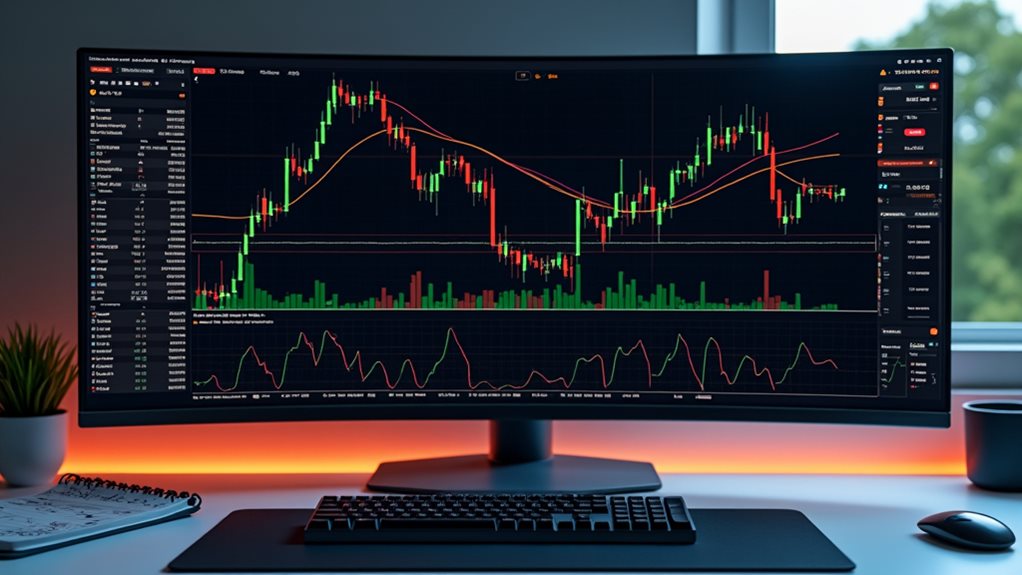
While indicators give you mathematical insights, chart patterns reveal the market’s visual story.
Let’s face it: crypto traders who ignore patterns are leaving money on the table.
The most reliable patterns? Inverse Head and Shoulders (84% success) and Double Bottom (82%). Not too shabby.
Chart pattern psychology shows why these work—they represent mass investor sentiment playing out visually. You’re literally seeing market psychology unfold on your screen.
Breakout confirmation techniques matter. A lot. Volume should spike during breakouts—no volume, no conviction. Simple as that.
Higher timeframe patterns trump those one-minute chart squiggles you’re obsessing over. Consecutive candles can provide strong confirmation when they align with your pattern’s direction.
Want reliability? Combine patterns with support/resistance levels.
Triple tops scream bearish reversal. Cup and handles signal bullish continuation. Triangles consolidate before explosive moves.
The crypto market’s 24/7 operation provides more trading opportunities than traditional markets, allowing for continuous pattern analysis.
Patterns fail sometimes. Deal with it.
Building a Multi-Indicator Strategy for Better Trading Decisions
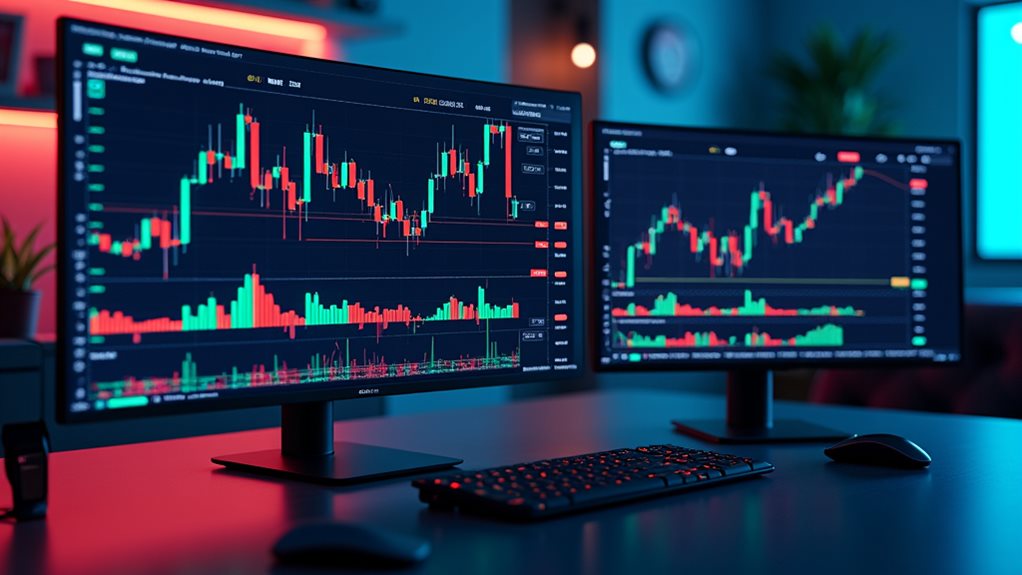
Most crypto traders fail because they rely on single indicators that are about as reliable as a weather forecast in London.
Smart indicator selection means combining complementary tools—pair momentum indicators like RSI with trend indicators like Moving Averages. Don’t just guess; confirm.
Pairing RSI with Moving Averages isn’t overkill—it’s essential confirmation in a market that punishes guesswork.
When RSI shows oversold conditions below 30, and MACD line crosses above the Signal line while price sits above the 50-day EMA? That’s your entry. Simple.
For strategy optimization, analyze multiple timeframes. Long-term charts define the trend, medium-term plans the trade, short-term fine-tunes entry points.
And please—watch the volume. Low volume means weak signals, period.
Remember: charts crammed with twenty indicators won’t make you rich. They’ll just give you a headache.
A Golden Cross formation can provide additional confirmation of an uptrend before entering a position.
Using Bollinger Bands alongside other indicators can help identify potential breakout opportunities when volatility increases after periods of consolidation.
Risk Management Techniques When Trading With Technical Analysis

Technical analysis without proper risk management is merely sophisticated gambling—and the house always wins. Fact.
Protect yourself with proper stop loss strategies that align with support levels, rather than arbitrary price points. Your technical tools should dictate where you place these safeguards.
Never risk more than you can stomach losing. Sounds obvious, right? Yet traders ignore this daily. Stop loss orders are essential for limiting potential losses when market movements contradict your analysis.
Position sizing matters more than your fancy indicators. Use trailing stops to lock in profits as trends develop.
Risk diversification isn’t optional in crypto. Spread capital across different assets and timeframes.
Pairing short positions with longs? Smart move. Rebalance regularly.
Remember those RSI readings and volume indicators? They’re not solely for entries—they’re risk assessment tools.
Overbought conditions scream danger. Listen to them. The Relative Strength Index helps you avoid entering markets in extreme conditions, reducing the likelihood of buying at peaks or selling at bottoms.
Frequently Asked Questions
How Do Trading Bots Perform Compared to Human Technical Analysis?
Trading bots offer superior efficiency with 24/7 operation and millisecond execution times. You’ll find they process more data than humans can, though they lack your intuition for unexpected market events and qualitative factors.
Can Technical Analysis Predict Black Swan Events in Cryptocurrency Markets?
No, technical analysis can’t predict black swan events. You’ll need event-driven analysis to supplement your strategy, as these rare occurrences create extreme market volatility that historical patterns simply cannot anticipate.
How Does Technical Analysis Differ Between Spot and Futures Crypto Trading?
In spot trading, you’ll focus on price action and volume. For futures trading, you must also analyze funding rates, leverage effects, open interest metrics, and liquidation thresholds while managing margin requirements and contract-specific dynamics.
Does Technical Analysis Work Better on Specific Timeframes for Cryptocurrencies?
Yes, it works differently across timeframes. You’ll find 4H, daily, and weekly charts best for identifying long term trends, while shorter timeframes like 15-min and 1-hour suit your short term strategies.
How Do Crypto Exchange Outages Impact Technical Analysis Signals?
Exchange outages disrupt your signals by creating gaps in data, distorting indicators and corrupting pattern formations. You’ll face unreliable readings, false breakouts, and compromised trading decisions due to poor exchange reliability during these disruptions.
